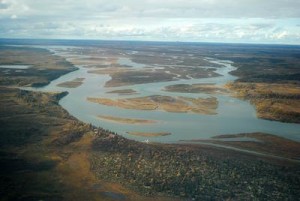Dear Reader,
We are writing to warn you of a federal action that could dramatically impact America’s domestic supplies of natural resources.
The U.S. Environmental Protection Agency (EPA) released its revised draft Bristol Bay Watershed Assessment last month in response to calls from anti-mining groups for the EPA to issue a preemptive permit veto under section 404(c) of the Clean Water Act of the Pebble mine outside of the prescribed permitting process.
A preemptive permit veto prior to the NEPA (National Environmental Policy Act) process has never been done. If this precedent is set, every exploratory domestic resource project in the United States will be at risk.
To lay the groundwork for the 404(c) denial, the EPA conducted the Bristol Bay Watershed Assessment based on the potential impacts of a hypothetical mine in southwestern Alaska. The study is of a hypothetical mine because the company has not even developed a mine plan yet.
The public comment period on the revised assessment is open until May 31, 2013. In an effort to ensure a balanced debate – as environmentalists will undoubtedly make ample use of their opportunity to voice their opposition to the project and an expansion of EPA authority via the EPA’s solicitation of public comment – we ask that you consider weighing in on this important issue and submit a comment to the EPA via their website.
Here are some key facts and links for further information. For your convenience, a sample message is pasted below.
Facts:
- In May of 2012, the U.S. Environmental Protection Agency, in response to call for a 404C Clean Water Act permit denial, released a cursory review of the Bristol Bay Watershed in Alaska – in spite of the fact that no permit application or specific plans had been submitted.
- The EPA’s unprecedented early action was part of efforts to derail the development of one of the largest domestic deposits of key strategic mineral resources (Copper, Molybdenum, Gold, Silver and Rhenium) in the so-called Pebble Deposit in Southwestern Alaska.
- Even scientists serving on the peer-review panel instituted by EPA to validate their study have criticized the purely hypothetical mine scenario used by EPA, and even used the term “hogwash” to characterize the approach.
- In April 2013, the EPA released its revised draft Bristol Bay Watershed Assessment. Not only does the assessment continue to focus on a hypothetical scenario, it also continues to rely on research paid for by an anti-mining group called Earthworks and conducted by a scientist who recently admitted to developing and submitting a tainted research report to win a $19 billion environmental tort judgment.
- While the U.S. is the world’s third-largest Copper producer, the related risk exposure to possible supply disruption is disproportionately greater than it is for any other mineral. On the national security front, the Pentagon has already reported a “significant delay” to a major weapons program due to inadequate copper supply.
- The unilateral expansion of EPA powers under section 404(c) of the Clean Water Act would effectively give the agency ultimate authority to derail any project in the United States that touches on water — with potential impact for projects in every sector of the US economy, from mining to farming, manufacturing, building, energy, and water treatment.
Links
- EPA’s revised draft Bristol Bay Watershed Assessment
- Instructions on how to submit public comments
- American Resources Principal Daniel McGroarty’s reaction to the revised assessment
- Previous related coverage by the American Resources Policy Network
Sample Message:
Dear Mr. Perciasepe,
I write to express my concerns regarding the Environmental Protection Agency’s revised draft Bristol Bay Watershed Assessment, which is flawed on several levels.
Not only does the assessment focus on a purely hypothetical scenario relating to the Pebble deposit, as no official permit requests or plans have been submitted, the assessment continues to rely on research from avowed biased anti mining groups such as Earthworks that have stated there is no large mine in the Unites States or the World that they support.
The Pebble deposit could be the largest copper resource in American history. Responsible development of it could create tens of thousands of much-needed jobs and billions in economic development.
At a time when America is struggling to expand its economy and compete with nations like China for raw resources, it is bad public policy that the Environmental Protection Agency would press ahead with a efforts to prevent a mining outside of the prescribed NEPA permitting process, as it would have devastating impacts on America’s natural resource development, exploration, investment, and development.
Sincerely,
xxxx





